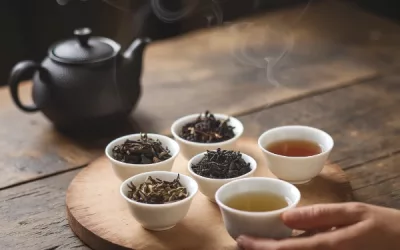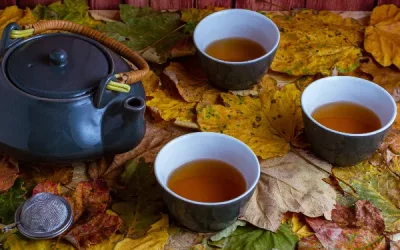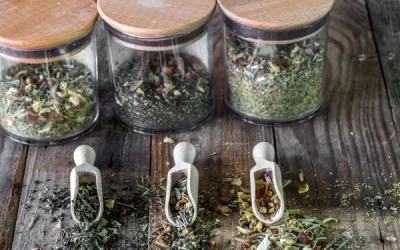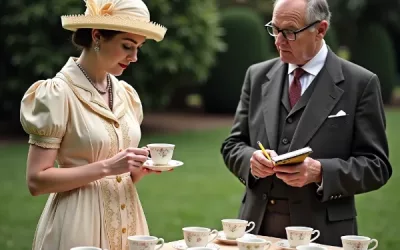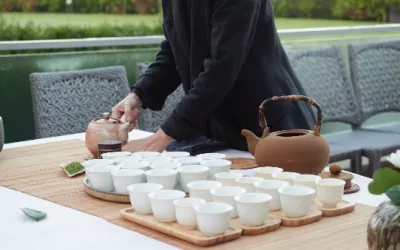Have you ever wondered if that lovely tin of Earl Grey is still good after sitting in your cupboard for months? The truth is, tea doesn’t last forever, and understanding its shelf life is crucial for both your taste buds and your health. With the proper storage techniques, you can ensure your favourite brews stay fresh and flavourful. In this article, we’ll explore the ins and outs of tea expiration, best practices for storage, and how to tell if your tea is still in peak condition. Let’s dive into the world of tea longevity together!
Table of Content
- Can tea expire?
- What are the best practices for storing tea?
- How long does different tea last?
- What happens if you drink expired tea?
- How can I extend the shelf life of my tea?
- Are there any myths about tea expiration?
- How do I know if my tea is still fresh?
- What are the storage recommendations for tea retailers?
- Conclusion
Can tea expire?
The short answer is yes, tea can “expire,” but it’s more accurate to say that its quality degrades over time rather than it spoiling in the traditional sense like milk or bread. Several factors influence the shelf life of tea, including storage conditions, type of tea, and handling.
Let’s break it down by looking at various elements like moisture, light exposure, air contamination, different types of tea, and storage methods.
- Moisture: Tea leaves are dried, which means they’re very susceptible to absorbing moisture from the air. High moisture levels can lead to mould growth.
- Light exposure: Direct sunlight can degrade the quality of tea leaves, causing them to lose flavour and aroma.
- Air contamination: Exposure to air can oxidise the tea leaves, making them stale and reducing their natural flavours.
- Tea type differences: Different types of tea, like green, black, white, and herbal teas, have varying shelf lives. For example, green tea generally has a shorter shelf-life compared to black tea, which can last longer due to its fermentation process.
- Storage methods: Proper storage can significantly extend the life of tea. Airtight containers and cool, dark places are your best bet to preserve tea’s quality.
In summary, while tea doesn’t truly expire, it is best enjoyed within a year of purchase to ensure the best flavor and aroma.
What are the signs that tea has expired?
When tea starts running past its prime, there are usually a few tell-tale signs.
- Loss of aroma: Fresh tea has a distinct scent that fades over time.
- Changes in colour: The leaves or tea dust may look duller or darker than usual.
- Off taste: If it tastes flat, stale, or lacks its usual robust flavour, it’s past its prime.
- Presence of moisture or mould: Any signs of moisture or mould mean the tea should be discarded immediately.
- Increased bitterness: Stale tea can often taste more bitter than fresh tea.
If you’re unsure, make a small brew and taste it. If it falls flat, it’s likely too old.
How does tea quality degrade over time?
Tea’s quality degrades primarily through the loss of essential oils and oxidation. When these compounds break down, the tea loses its freshness, flavour, and health benefits.
- Oxidation: Exposure to air initiates a chemical reaction that deteriorates the tea leaves.
- Volatile compounds: Essential oils and flavour compounds evaporate over time, reducing aroma and taste.
- Light and heat: Harmful UV rays and heat can accelerate the breakdown of these compounds.
Proper storage can help slow down these processes, but even with the best care, tea won’t last forever.
Is there a difference between expiration and best by dates?
Yes, there is a difference between “expiration” and “best by” dates when it comes to tea.
- Expiration Date: This is less common and usually indicates when the tea is no longer safe to consume, which is rarely the case for tea.
- Best By Date: This date suggests when the tea will be at its peak quality in terms of flavour, aroma, and potency. After this date, the tea will still be drinkable but may not provide the best experience.
Most teas can be consumed well after their “best by” dates if they’ve been stored properly, but their quality will not be the same.
Back in the 18th century, tea was so valuable that it was often stored in intricate tea caddies with lockable tops to safeguard its high quality. In fact, Catherine of Braganza, who popularised tea in England, reportedly had an array of beautifully adorned tins to store her precious leaves. These storage methods highlight the importance of keeping tea in a controlled environment, a practice that’s still relevant today.
On a personal note, I remember finding an old tin of Earl Grey in my grandma’s pantry. It must have been there for years, tucked away in a corner. I excitedly brewed a cup, but it tasted flat and lacked the signature bergamot aroma. That’s when I realised just how crucial proper storage is if you want to enjoy a perfect cup every time.
What are the best practices for storing tea?
Storing tea properly ensures you maintain its flavour, aroma, and quality. Whether you’re a tea enthusiast or a business owner, understanding the best practices for storing tea is essential. Correct storage not only preserves the tea’s taste but also extends its shelf life.
When thinking about storing tea, consider factors like light, air, moisture, and temperature. Each tea type may require different conditions to keep it fresh. Using airtight containers and keeping tea away from heat sources can make a significant difference.
Here’s an easy-to-understand table to guide you through the various types of tea, their recommended storage conditions, expected shelf life, and handy preservation tips:
| Tea Types | Ideal Storage Conditions | Shelf Life | Preservation Tips |
|---|---|---|---|
| Green Tea | Airtight container, cool and dry place, away from light | 6 months to 1 year | Use opaque containers, store in a cupboard |
| Black Tea | Airtight container, room temperature | 1 to 2 years | Keep away from strong odours, store in a pantry |
| Oolong Tea | Airtight container, cool and dry place, away from moisture | 1 to 2 years | Refrigerate for long-term storage, avoid frequent opening |
| White Tea | Airtight container, cool and dry place | up to 2 years | Keep in a dark cupboard, avoid humidity |
| Pu-erh Tea | Slightly breathable container, cool and dry place | Indefinite if aged properly | Age in a dark, dry environment, avoid strong odours |
| Herbal Tea | Airtight container, cool and dry place | 6 months to 1 year | Use glass jars, keep away from spices |
| Matcha | Airtight container, refrigerator | 1 year | Keep sealed in a vacuum pack if possible, minimise air exposure |
How to use and understand the table
This table is designed to help you identify the optimal storage conditions for different tea types. Follow these tips to keep your teas fresh for longer periods:
- Green Tea stays fresh for up to a year if stored in opaque containers in a dark place.
- Black Tea can last up to two years if kept at room temperature and away from strong odours.
- Oolong Tea benefits from refrigeration for long-term storage and should be kept away from moisture.
- White Tea can be stored for up to two years in a cool, dark cupboard away from humidity.
- Pu-erh Tea is unique in that it can age indefinitely if stored properly in a breathable container.
- Herbal Tea should be kept in glass jars, away from strong scents, to maintain its flavour for up to a year.
- Matcha requires refrigeration and airtight containers to stay fresh for a year.
Why is tea storage important?
Proper tea storage is crucial for maintaining the tea’s quality. If stored incorrectly, tea can lose its flavour, aroma, and even its health benefits. By adhering to proper storage techniques, you ensure that your tea remains enjoyable and beneficial.
- Preventing moisture: Moisture can cause tea leaves to spoil or mould.
- Avoiding light: Light exposure can degrade the quality and taste of tea.
- Minimising air: Air causes oxidation, which can lead to a stale flavour.
- Temperature control: Avoid storing tea in warm places, as it can speed up deterioration.
Tea storage has significant cultural importance in various regions where tea is more than just a beverage. Japan, for example, has a long history of preserving tea quality with meticulous care.
During the Tang Dynasty in China, it is believed that Lu Yu, the revered “Sage of Tea,” profoundly influenced tea culture. He wrote “The Classic of Tea,” which detailed the preparation and storage of tea leaves. His work emphasised the importance of proper storage techniques to maintain tea’s quality during transportation. This ancient wisdom is still practical today.
From my personal experience, I remember when I first started buying loose-leaf tea. I had a lovely oolong that I kept in a standard kitchen cupboard. It wasn’t long before the flavour seemed to diminish. After doing a bit of research, I moved it to an airtight container in a cooler, dark cabinet. The difference was remarkable—the rich taste and aroma were back, and now it’s become a ritual to ensure all my teas are stored just right.
Proper tea storage isn’t just about following guidelines; it’s about ensuring that every cup brings joy and relaxation. By paying attention to how and where you store your tea, you can savour its true essence every time.
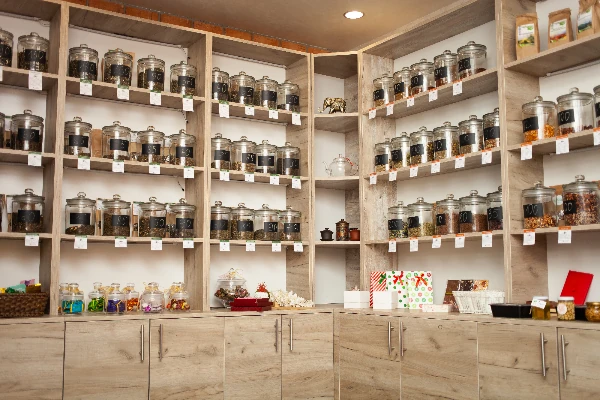
How long does different tea last?
Different types of tea have varied shelf lives depending on factors like oxidation levels, storage conditions, and their innate stubbornness to decay. So, buckle up because we’re about to explore how long your favourite teas can last and how to make sure they don’t end up turning into compost prematurely.
First off, tea isn’t immortal. Let’s break it down:
- Black Tea: The king of longevity. With its full oxidation process, black tea can last up to 3 years if stored properly.
- Green Tea: This one’s pretty sensitive. Green tea, with minimal oxidation, usually lasts about 1 year.
- Oolong Tea: Somewhere in the middle. Oolongs can last between 1 to 2 years, depending on how they’re stored and their oxidation levels.
- Herbal Tea: Often the longest-lasting. Herbal blends can maintain quality for around 2 to 3 years as they generally contain dried herbs, fruits, and flowers.
Factors that muck up the shelf life include:
- Light: Keep your tea out of the limelight. Exposure to light can degrade the leaves and affect flavour.
- Humidity: Tea leaves hate moisture. It’ll make them lose their crispness and can lead to mold.
- Heat: Higher temperatures can speed up oxidation and wreck your tea’s taste.
- Air: Oxygen is not your tea’s friend. Exposure to the air can cause your tea leaves to go stale faster.
Your mission, should you choose to accept it, is to store your tea in a cool, dry, dark place in an airtight container. If you’re feeling particularly fancy, throw in some refractory glass jars or tins with tight lids.
Which type of tea has the shortest shelf life?
Drumroll, please… It’s green tea! That poor thing can only keep it together for about a year before it starts losing its vibrance and flavour. The reason? It’s barely oxidised. Unlike black tea that’s been through the oxidation wringer, green tea retains that fresh, grassy note but also means it’s more prone to degrading quickly.
How can I tell if my green tea is still good?
So, you’ve unearthed a forgotten stash of green tea and are wondering if it’s still drinkable or should be unceremoniously chucked? Fear not.
Here’s how to perform a quick quality check:
- Smell it: A fresh batch should have a vibrant, grassy aroma. If it’s smelling like old newspapers, toss it.
- Look at it: Bright green leaves indicate good quality. A dull, brownish hue suggests it’s past its prime.
- Taste it: Brew a small amount. If it tastes flat or stale rather than fresh and slightly sweet, it’s probably not at its best.
- Check for pests: Sometimes, critters find tea just as delightful as we do. Any signs of infestation mean it’s time to say goodbye.
Green tea can be a bit of a diva and requires adequate storage to maintain its delicate flavours. A good strategy is to buy it in smaller quantities and replenish often to ensure you’re always sipping the freshest leaves.
Do herbal teas have a longer shelf life?
Indeed, they do! Herbal teas tend to last longer than their caffeinated counterparts. Why? Because many herbal teas are dried fruits, flowers, herbs, and spices, which are naturally more stable over time.
Here’s what you need to keep in mind:
- Ingredients longevity: Dried herbs like chamomile, peppermint, and hibiscus fare well over the long haul.
- Storage conditions: Just like other teas, keeping herbal blends away from light, moisture, heat, and air is key.
- Packaging: Airtight containers are your best friends. Mason jars with rubber seals work wonders.
Despite their longer shelf life, herbal teas can still lose potency and flavour over time. Give them a good sniff and look before brewing to ensure they’re hitting the right notes.
Here’s a quick checklist to see if your herbal tea is still in top shape:
- Colour: Vibrant colours typically mean the herbs and flowers are still potent.
- Aroma: A strong, pleasant scent is a good sign. Weak or musty? Not so much.
- Texture: No moisture should be present. If it feels damp, it’s time to let it go.
- Taste: As with green tea, brewing a small amount will reveal if it’s still up to par.
In 1773, a group of American colonists with a rather acute sense for drama, known as the Sons of Liberty, threw an entire shipment of tea into the Boston Harbour. They were protesting the Tea Act imposed by the British. Now, I’m not suggesting you chuck your expired tea into a significant body of water to make a point, but it’s a reminder that tea quality has long been a topic of note. Just try to avoid wasting it and store it properly!
So, there you have it. Keep your tea fresh and your taste buds happy by storing it right and paying attention to those expiry signs. Happy brewing!
What happens if you drink expired tea?
Drinking expired tea is generally not harmful, but the experience might not be as pleasant or flavorful.
But alright, so you’ve found that dusty box of tea bags at the back of your cupboard. The expiration date is long past, but you think, “It’s just leaves, right? Can tea really go bad?” Let’s break down what happens when you take a sip of that expired brew.
Tea, in general, doesn’t have a hard expiry date like milk or bread. It’s more of a best-before date. But just because it doesn’t rot like old cheese doesn’t mean it’s risk-free. Drinking expired tea can lead to a range of consequences that are definitely not your cup of tea.
First off, the flavour. Stale tea loses its robust taste and aroma, turning what should be a delightful experience into a blah one. But beyond that, stale tea can also pose some health risks.
Can expired tea make you sick?
The simple, and slightly alarming, answer is yes. Now, we’re not talking full-on, need-to-rush-to-the-hospital sick, but there are some concerns.
- Mycotoxins: If tea has been exposed to moisture, it can develop mould. Mould produces mycotoxins, which are harmful to health.
- Bacteria: Moist environments can also be breeding grounds for bacteria. Not exactly what you want floating around in your cuppa.
- Chemical Breakdown: Over time, tea’s natural compounds break down, possibly producing substances that might upset your stomach.
Expert opinions vary, but many agree that while an old tea bag probably won’t kill you, it’s not worth the risk. Your tummy might not appreciate the gamble.
What are the symptoms of drinking spoiled tea?
So, you’ve ignored my warning and knocked back a cup of suspiciously ancient tea. What delightful effects might ensue?
- Nausea: Your stomach’s way of saying, “Why did you do this to me?”
- Upset Stomach: General discomfort and sometimes diarrhoea.
- Allergic Reactions: If mould is present, you might experience symptoms like sneezing, itching, or even respiratory issues.
- Disgust: Let’s be honest, the taste alone might make you feel ill.
Symptoms can vary depending on how bad the tea is, but these are good indicators that perhaps you should’ve ditched that box when Elvis was still in the building.
Is it safe to consume tea after the best by date?
Now, let’s tone it down a notch. Not all expired teas are ticking time bombs. The “best by” date is more about quality than safety.
- Look and Smell: If the tea still looks and smells decent, it’s probably fine. Dry tea isn’t a prime environment for bacteria and mould to thrive.
- Proper Storage: Kept your tea in a cool, dry place away from sunlight? Kudos. It’ll last longer and stay fresher.
- Tea Type: Herbal teas with dried fruits and flowers tend to spoil faster than traditional black or green teas.
- Use Your Senses: If it tastes alright and doesn’t give you the gag reflex, it’s probably safe.
In sum, consuming tea just past its “best by” date is usually okay – just not too far past it. If we’re talking years, it’s probably best to give it a miss.
Now, allow me to share a real tale that ties wonderfully into this subject. In the early 20th century, explorer Robert Falcon Scott embarked on an ill-fated journey to the South Pole. They took with them – you guessed it – tea. However, Scott’s team didn’t have the best storage, and their tea eventually went stale.
The dull flavour didn’t boost moral; worse yet, supplies of fresher provisions diminished, leading to malnutrition and illness. While the tea wasn’t solely to blame, their dire situation was exacerbated by the lack of fresh, nourishing essentials. Moral of the story: fresh tea might not save your life, but it certainly helps keep morale afloat.
So, next time you find an ancient box of tea bags, think about Scott’s expedition, and maybe don’t risk it. Your taste buds – and your stomach – will thank you.
How can I extend the shelf life of my tea?
Tea enthusiasts, health nuts, and savvy tea entrepreneurs, lend me your ears—or eyes, rather. Tea may seem like an immortal elixir, but it has a mortal enemy: time. For those cradling precious leaves like they’re gold nuggets, extending the tea’s shelf life is vital. Fear not, though. I’ve got the ultimate guide to maintaining its freshness and flavour. Let’s dive right in.
First off, proper sealing techniques are your best friend. Keep your tea tighter than your grandmother’s hug. Proper sealing ensures that air doesn’t creep into your tea, like a nosy neighbour prying into your business.
Next, let’s talk storage. You wouldn’t store your prized wine in a plastic cup, so don’t do the same to your tea. Choosing the proper abode for your lovely leaves is paramount to longevity.
And let’s not ignore climate considerations. Your tea is basically a diva; it hates humidity, bright lights, and dramatic temperature swings. Treat it like a character from Downton Abbey who needs everything just so, and you’ll be richly rewarded.
What type of container is best for storing tea?
There’s a saying: “Good tea deserves good things.” So, let’s get down to the brass tacks—what’s the best container?
- Airtight tins: They’re basically the Fort Knox for your tea leaves.
- Opaque containers: Tea doesn’t need to tan, so keep it away from light.
- Ceramic jars: These offer both style and substance.
- Glass jars: Only if placed inside a dark cupboard (remember, no spotlight for the tea).
- Multi-layered canisters: Because more layers mean more protection.
If you’ve got your tea in a plastic bag, it’s akin to storing jewels in a paper bag. Invest in a solid airtight tin; it’ll thank you in flavour.
Humidity is basically Darth Vader to your tea leaves. Tea is like that snooty friend who doesn’t like moisture, not one bit. Humidity makes your tea leaves go limp and lose their essence. So, keep your tea in a cool, dry place.
How does humidity affect tea storage?
Have a love-hate relationship with humidity? Welcome to the club. Humidity is the arch-nemesis of fine tea storage. It can do some serious damage.
- Mould growth: The bane of every tea enthusiast, accelerating tea’s decay.
- Loss of flavour: You don’t want your delicate white tea tasting like your wet towel.
- Stickiness: Tea leaves can stick together, making a mangled mess.
- Oxidation: Speeds up, ruining the intricate flavours.
- Infestation: Creepy crawlies may decide to join your tea party.
Thus, an air-conditioned room, a dehumidifier, or even silica gel packets can be your tea’s best friend.
Can I freeze tea to extend its life?
If you’re considering freezing your tea, here’s some food—or tea—for thought. Freezing seems like a magical ice-cube solution, but it’s got its caveats.
- Risk of condensation: The minute those leaves come back to room temperature, there’s a water party going on.
- Cell damage: Freezing can disrupt the cell structure of the leaves.
- Loss of aroma: Your beloved fragrant oolong may turn into a wallflower.
- Inefficiency for quick use: Thawing takes time and patience.
- Risk of odour transfer: Hello, tea that smells like last night’s leftovers.
Instead, opt for the tried and tested air-tight methods unless you’ve got some ultra-rare vintage tea that demands extreme measures.
Speaking of extreme measures, did you know that back in the 19th century, tea was so valuable that it was stored in lead-lined containers on ships to protect it from spoilage? These containers were sealed like the crown jewels.
Unfortunately, the lead sometimes leached into the tea, leading to “Mad Hatter” symptoms in Victorian times. Even back then, folks went to great lengths to preserve their tea! Thankfully, we’ve got much safer methods now.
So, treat your tea with the dignity it deserves. Store it well, keep it dry, and enjoy each sip. Cheers!
Are there any myths about tea expiration?
Ahh, tea – the delightful beverage that brings warmth to our hearts and tranquillity to our moments. There are a bunch of beliefs about tea’s longevity, how to store it, and its eternal freshness. But let’s not drown in those myths, shall we?
Common misconceptions about tea expiration are as rampant as rumours in high school. Some assume a vintage box of tea bags will last forever like some magical infusion. Others think any container will do for storage, as if tea isn’t a delicate little leaf. Different cultures also bring their own quirky ideas to the table. Ready to bust some myths?
Is it true that all tea lasts forever?
Straight answer: No, absolutely not. Tea is not the elixir of immortality.
Expect your tea to be like that one friend who gets tired and fades away if ignored for too long. Typically, black tea hangs around for about 2-3 years, while green tea, being as energetic as a toddler, loses its vibrancy within a year or so.
- Black tea: 2-3 years of optimal freshness
- Green tea: 1 year before it goes all dull and lifeless
- Herbal teas: Usually 1-2 years
- White tea: Roughly 2 years, provided it’s not mistreated
Just because you find a dusty tea box in the attic doesn’t mean you should drink it. It’s not a vintage wine, folks.
To keep your tea tasting like, well, tea, store it properly. Use airtight containers and keep those leaves away from light, moisture, heat, and strong odours.
Do some cultures have different beliefs about tea storage?
Absolutely. Tea traditions can be as diverse as the crowd at a music festival.
- In China, there’s an entire art to storing tea, including humidity control and special containers.
- Japanese tea lovers pay close attention to the type of container, often choosing ceramic or caddies lined with washi paper.
- Brits usually shove it into a tin and call it a day, but hey, at least the tin’s airtight!
- Moroccan tea enthusiasts are meticulous about keeping their mint tea fresh by using a well-sealed jar.
All these practices show a deep respect for tea and its preservation, yet methodically different approaches reflect cultural uniqueness and reverence for their preferred brew.
What are the most common myths about tea?
Let’s put some of these tea tall tales to bed, shall we?
- Tea lasts forever: We’ve already debunked this. Spoiler: it doesn’t.
- Old tea equals better tea: No, that ratty-looking tea leaves you’ve kept since the ’90s won’t give you superpowers. Freshness matters.
- Any container will do for storage: If you’re using that cookie tin with a broken lid, you might as well be throwing your tea in the compost. Airtight, people!
- Tea cannot be refrigerated: This one’s tricky. While general rule is to avoid it, some premium teas actually benefit from cold storage – but always consult an expert first.
- Flavoured teas last as long as plain ones: Nope. Flavoured teas can lose their flavour more quickly due to the added ingredients.
Be informed, stay fresh, and savour that perfect cup of tea like a pro.
Long ago in the 18th century, tea was so revered in Britain that it was locked in tea caddies, small decorative boxes. These caddies had keys, and only the lady of the house held them. Imagine the power! This wasn’t just to show off—it was a way to preserve the precious leaves’ freshness and flavour.
That respect for proper storage weaved through time highlights how critical keeping tea fresh has always been. So channel your inner 18th-century aristocrat—just without the powdered wigs—and give your tea the care it deserves.
How do I know if my tea is still fresh?
Alright, let’s cut to the chase. Figuring out if your tea is still fresh can be a bit of a science experiment, but don’t panic! It’s all about engaging your senses and using a bit of common sense. Here’s the tea on… well, tea freshness.
What should I smell for to assess tea freshness?
When it comes to judging tea by smell, trust your nose. Just like you wouldn’t go near questionable leftovers, your nose will tip you off if your tea’s past its prime. If it smells off, funky, or you can’t smell much at all, it could be time to bid farewell.
A fresh tea should have a strong, vibrant aroma that hints at its character.
- Aromas: Fresh tea smells like a spring meadow or a lush forest.
- Intensity: Strong, vibrant aroma? Great. Weak, barely-there? Not so much.
- Off-Putting Scents: Musty, sour, or metallic? Chuck it out.
- Consistency: Comparable to that of your past batches of tea.
If your tea smells anything like grandma’s attic, trust me, it’s better off meeting the bin.
Are there visual cues for fresh tea?
The eye test doesn’t just apply to squash players. Tea needs that same keen visual inspection. Fix your gaze on those leaves, and you can often see whether they’re past their heyday. Good tea looks lively, vibrant, and consistent – a bit like that friend who always seems to have their life together.
- Colour: Vibrant and not faded.
- Leaf Integrity: Whole leaves over crushed or dusty bits.
- Moisture: Any signs of moisture? Mold? If yes, bin it.
- Foreign Matter: Twigs, stems, or other surprises? Lower quality.
Visual cues are particularly great because, unlike smelly encounters, nothing is jumping up your nostrils uninvited.
How can taste indicate tea quality?
Alright, this one is for the brave hearts with discerning taste buds. When your tea smells fresh and looks fabulous, brewing a cup can be the ultimate judge of quality. After all, the proof is in the cuppa.
- Flavour: Should be vibrant, complex, and true to type.
- Astringency: Too harsh or too mellow can be warning signs.
- Aftertaste: Should leave a pleasant lingering note.
- Mouth Feel: Smooth and satisfying, not flat or stale.
The taste test is the final hurrah. If your cup fails these criteria, then off it goes!
I remember hearing about this small peaceful village in the Fujian province of China, known for producing elite-quality tea. Farmers there have honed the art of tea making over centuries, with meticulous sensory evaluations.
They could tell if tea was fresh just by the sound it made when rubbed between their fingers! That’s the kind of expertise we’re aiming for – perhaps minus the need for superhuman abilities, but you get my point.
Fresh tea isn’t just a pleasure; it’s an experience that’s worth the extra sniff, look, and taste! Enjoy your next cup with confidence.
What are the storage recommendations for tea retailers?
If you’re diving into the world of tea retail, you’ve got to nail down how to store those delicate leaves. Whether you’re running a quaint local tea shop or managing a vast online empire, your approach to storing tea can make or break your business. Let’s dive into the essentials of bulk storage solutions, customer education on tea quality, and keeping optimal conditions for your stock.
Rolling in with bulk storage solutions, the goal is to protect your tea from the dastardly trio: light, air, and moisture. Light can bleach the life out of those vibrant leaves, air can oxidise them faster than a cut apple, and moisture… well, let’s just say tea soup isn’t a thing and it shouldn’t be.
Next up, customer education on tea quality is just as crucial. If your customers don’t know how to treat their premium leaves, they’ll be back knocking on your door, tea woes in hand. Educate them about the signs of fresh vs. expired tea, storage tips, and the impact of proper handling on flavour profiles.
Maintaining optimal conditions in a retail environment is like juggling. You’ve got to keep everything in the perfect balance to ensure those pricey leaves stay top-notch. Temperature, humidity, and cleanliness all need to be considered.
How should retailers store different types of tea?
Different teas, different strokes. Whether it’s the delicate Darjeeling or robust Pu-erh, each type demands unique storage tweaks.
- Green Tea: Store it airtight and chill it out, ideally in the fridge.
- Black Tea: More forgiving than its green cousins. Keep it in a cool, dark cupboard.
- Oolong: Split this guy between fridge and cupboard based on oxidation levels.
- White Tea: Handle with kid gloves – cool and dry spaces are your friends.
- Herbal Tea: Treat it like black tea, but keep in mind it has a shorter shelf life.
Considering these points keeps your teas happy and your customers happier. Nobody wants stale tea, so store smart.
What role does customer education play in tea quality?
Keeping your customers in the know isn’t just a nice-to-have; it’s essential. Educated customers make better tea, and better tea means they’re coming back for more.
- Understanding Expiry: Teach them that yes, tea can indeed expire. Freshness affects flavour.
- Proper Storage: Advise them on keeping tea in airtight containers away from light and moisture.
- Brewing Tips: Share tips on water temperature and brewing times for different types.
- Flavour Appreciation: Help them recognise off-flavours in old tea versus the burst of freshness in new tea.
- Health Benefits: Promote the health perks of fresh, well-stored tea.
With customer education, it’s all about empowerment. Once they know exactly what to look for and how to care for their tea, they’ll appreciate and value what you offer even more.
How can retailers manage tea inventory effectively?
Inventory management might sound as thrilling as accounting, but it’s vital. Keep your stock in check to maintain quality.
- First In, First Out (FIFO): Move the old stock first. Simple and effective.
- Regular Audits: Check your stock periodically to ensure quality.
- Clear Labelling: Date your stock so you know what’s fresh and what’s not.
- Optimal Stock Levels: Avoid overstocking. Too much tea sitting around can lead to quality degradation.
- Climate Control: Invest in proper storage solutions to keep your stock in the best condition.
Keeping on top of your inventory means you’ll always know exactly what you have and in what condition. This not only saves you money but also keeps your customers satisfied.
In the early 1900s, when tea became wildly popular in Britain, tea merchants like Thomas Lipton revolutionised the tea industry by focusing on quality and accessibility. Lipton bought his own tea plantations to ensure quality control from plant to cup. This type of dedication mirrors the modern-day focus on proper storage and customer education – getting every detail right, from the time the leaves are picked to when they reach the customer’s cup.
Conclusion
As I reflect on the complexities surrounding the shelf life of tea, it’s clear that understanding whether tea can expire is more nuanced than it may initially seem. Tea does not simply go bad in the same way that perishable foods do; rather, its quality can decline due to various factors including moisture, exposure to light, and the inherent characteristics of the tea itself. Recognising the signs of expired tea—such as off smells or stale flavours—can help us make informed decisions about our beloved brews.
The importance of proper storage practices cannot be overstated. By employing appropriate techniques, such as using airtight containers and storing tea in a cool, dark place, we can significantly extend its shelf life and maintain its delightful flavours. This holds significant implications not just for tea enthusiasts, but also for retailers who bear the responsibility of ensuring product quality.
Looking ahead, I encourage tea lovers and retailers alike to adopt these best practices and to remain vigilant about the indicators of freshness. There’s much to be discovered about how diverse types of tea interact with their environments, and additional research into preservation methods could benefit our understanding even further.
So, as I sit down with my next cup, I’ll ponder this: can we truly appreciate the delicate nuances of tea if we don’t respect its life span? “Tea is the magic key to the vault where my brain is kept,” as Frances Hardinge wisely said; let’s ensure that vault remains well-guarded for many brews to come.
Resources
- Tea Consumption and Health Outcomes: Umbrella …
- Effects of Tea Consumption on Nutrition and Health
- Tea and Health: Studies in Humans – PMC – National Center for …
- Temporal depletion of packaged tea antioxidant quality under commercial storage condition
- Changes in amino acids, catechins and alkaloids during the storage of …
- Research Review on Quality Detection of Fresh Tea Leaves Based … – PubMed
- Quality assessment of fresh tea leaves by estimating … – ResearchGate


